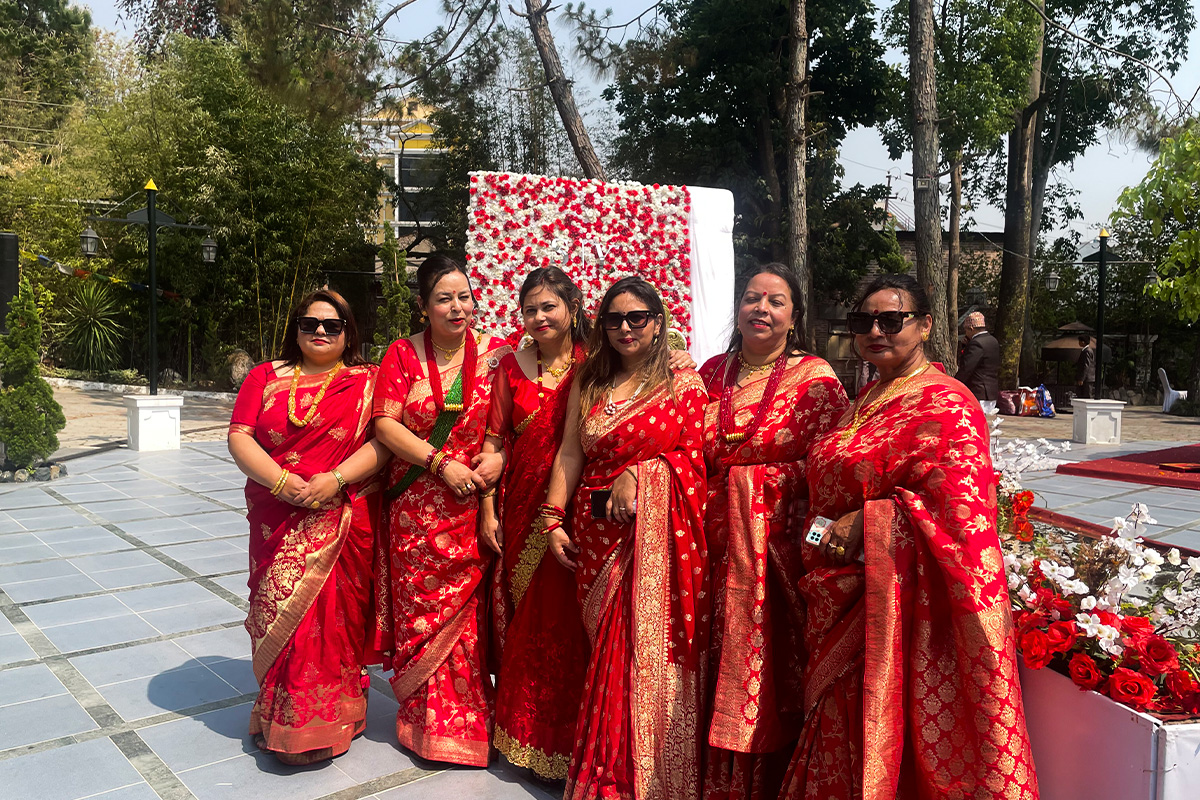Monsoon, Agriculture, and Spiritual Renewal
Usually, the month of Shrawan occurs simultaneously with the arrival of monsoon which holds a significant value to the Agrarian communities universally. Traditionally, farmers observe a break from their agricultural activities during Shrawan. They allow the freshly sown paddy to germinate and the land to replenish by the monsoon rain. This period provides an opportunity for the devotees of Lord Shiva to seek blessing and pursue spirituality. Devotees undertake pilgrimages like the Kailash Mansarovar Yatra, Kedarnath Temple, Somnath Mandir in India, Pashupatinath Temple, Muktinath in Nepal, and many Shiva temples particularly those located in the Himalayan landscapes. Mondays during Shrawan hold special significance as the Hindu women observe Shravan Somvar Vrat (fasting vows). Devotees offer prayers with offerings of bel (wood apple) leaves, dhatura flowers, and holy water (jal), seeking Lord Shiva's grace for a bountiful harvest and overall well-being.
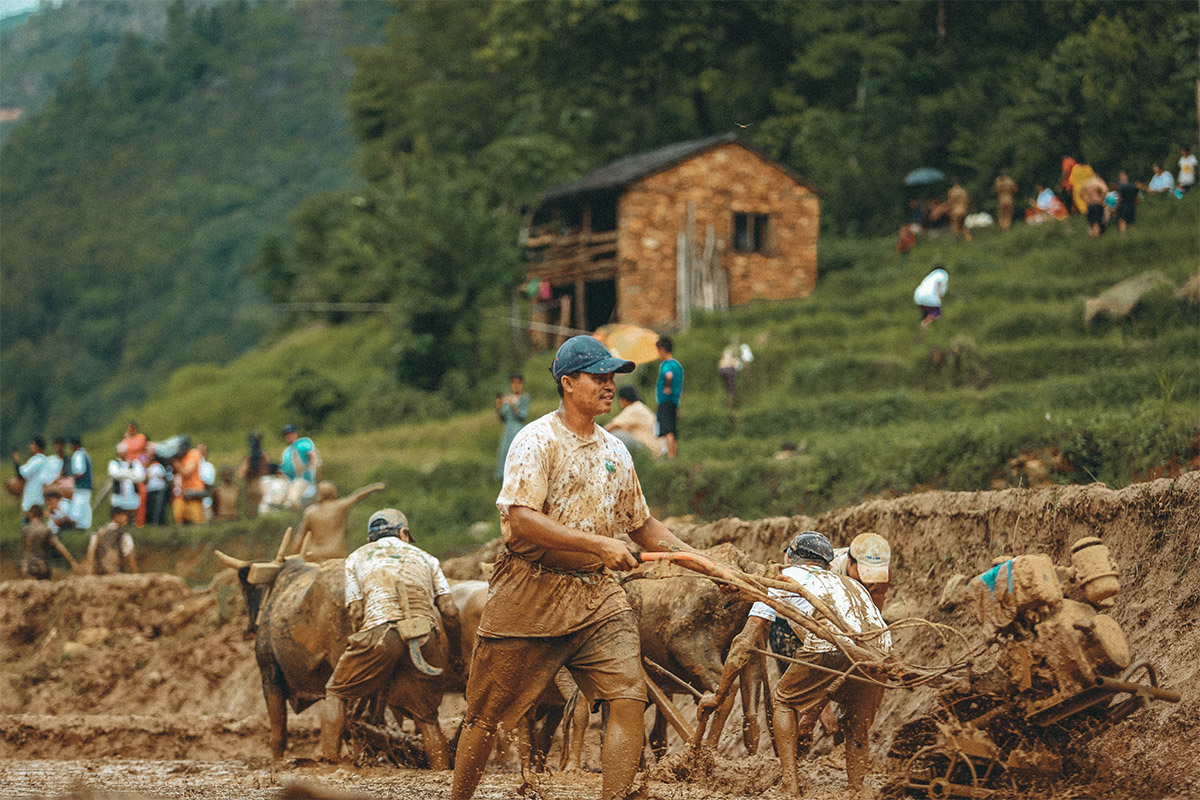
Food Festivities
Shrawan Sankranti festival blooms across the Hindu communities worldwide reflecting the ancient artistic culture of making rangolis (colorful floor patterns) in temples and homes of Hindus. The rangoli-making culture is widely famous in Indian society. The scrumptious aroma of the traditional species used in the dishes fills the air during the Shrawan Sankranti inviting relatives from a distance. The fragrance of grandma’s freshly prepared vegetarian meals and desserts is like a warm hug on a rainy day. Food of Shrawan Sankranti is a reminder of the roots and a reason to connect, celebrate, and share a meal, even virtually, if need be.
A Celebration of Purity and Health through Vegetarianism
The emphasis on vegetarian meals during the holy month of Shrawan Sankranti reflects purity and self-control. The majority of Hindus refrain from meats, eggs, and certain vegetables like onions and garlic due to their stimulating properties. The Ayurvedic principles of healthy eating during the monsoon season emphasize consuming freshly available ingredients and produce.
Shrawan Sankranti food plays a central role in celebrations and offers a delightful merge of regional culinary traditions. The special vegetarian food prepared during Shrawan Sankranti consists of seasonal ingredients that promote good health during the unpredictable monsoon season. Green leafy vegetables sprouted lentils, and milk-based dishes are some of the popular vegetarian dishes. Some of the most beloved Shrawan Sankranti delicacies include:
- Kheer: A sweet rice pudding flavored with cardamom and nuts, a symbol of purity and auspiciousness.
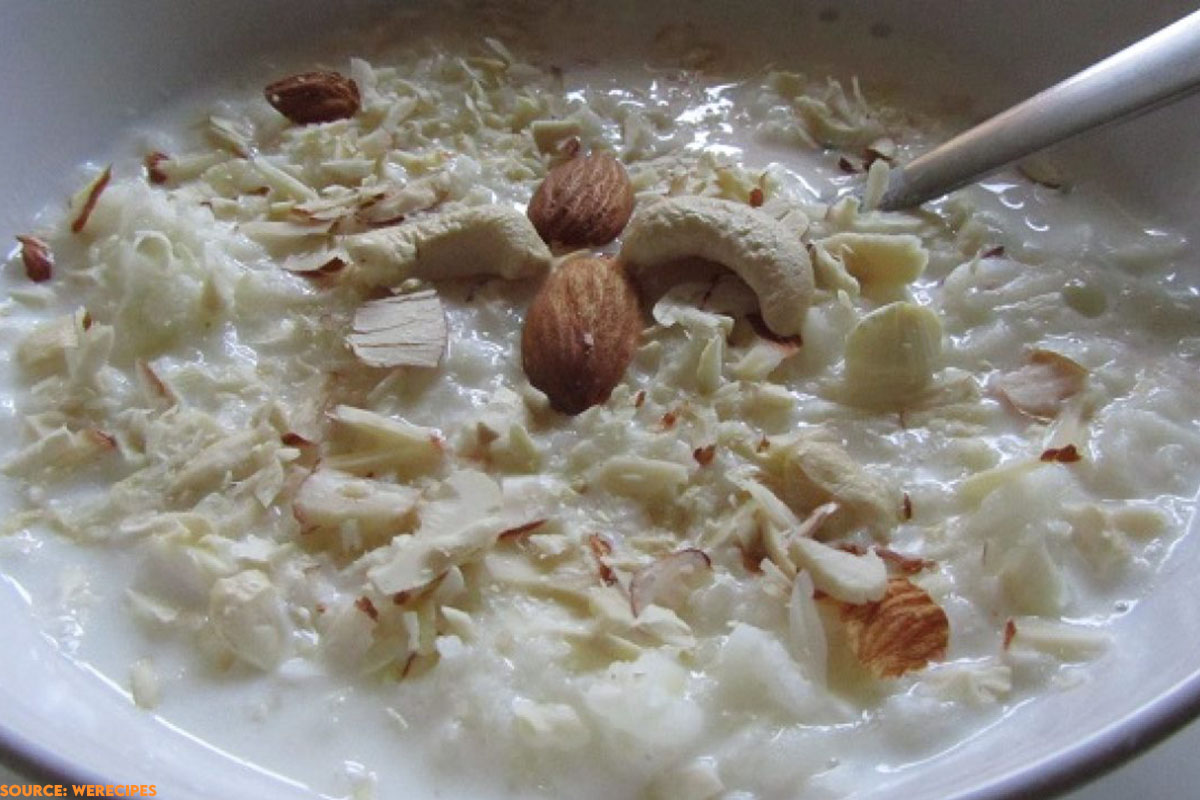
- Sabudana Khichadi: A savory and light dish made with tapioca pearls, peanuts, and spices, perfect for the monsoon season.

- Falahari Chivda: A mixture of roasted nuts, puffed rice, and dried fruits, offering a burst of flavors and textures.

Regional Delights of Shrawan Sankranti
Beyond these pan-Indian favorites, Shrawan Sankranti has a variety of regional specialties:
- Nepal: Kwati is considered a popular Shrawan sankranti food in Nepal. It is a hearty soup made with nine types of beans and aromatic spices, usually served with rice or rotis.

- Gujarat: Gujarati Hindus favor ringan batata nu shaak which is a simple yet flavorful dish of eggplant and potatoes cooked with minimal spices.
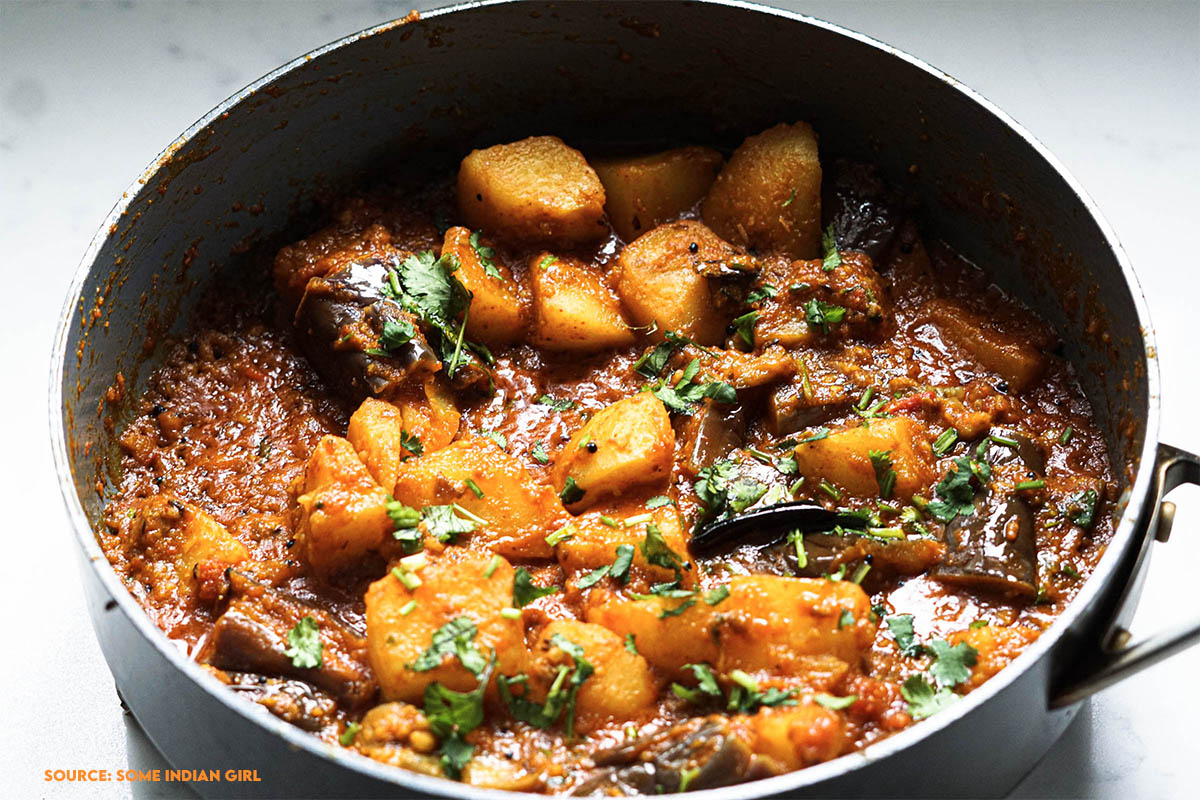
- Maharashtra: Maharashtrians enjoy a unique stew of kokum (a sour fruit) and vegetables.
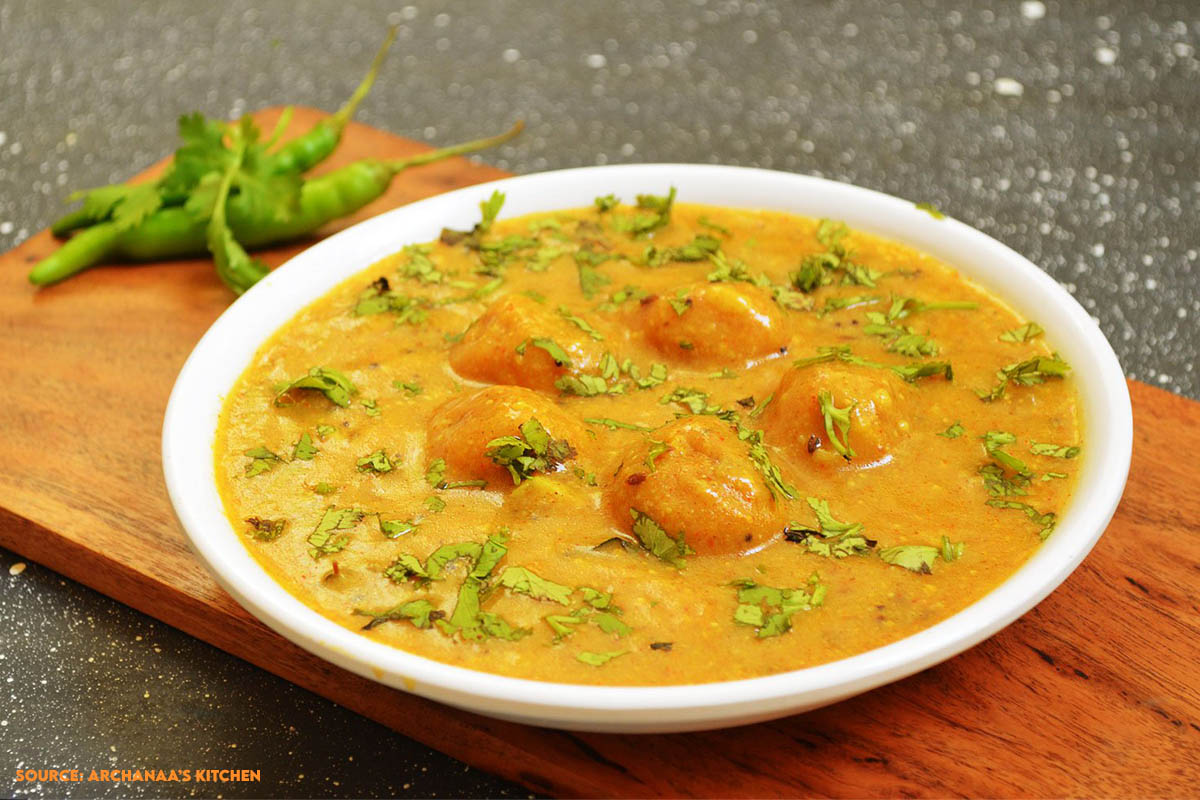
Shrawan Sankranti in Nepal
Shrawan Sankranti is celebrated during the 1st of Shrawan (16th July, 2025) with immense devotion by offering prayers at the sacred Shiva Temple, Pashupatinath Mandir. The priests in the temple tie janai (a sacred thread) to the devotees symbolizing purity and protection from evil spirits. Additionally, the day is also celebrated as the “Luto Falne Din” meaning a tradition celebrated by ancestors to get rid of scabies throughout the year. The reason behind this tradition is simple. During the plantation season (Ropai), the farmers who worked barefoot in the muddy fields were prone to getting skin conditions like scabies and rashes. A small piece of firewood is lit on fire and encircled around the body to ward off the itchiness. The day is considered as “ A cleansing day” and is a common practice of Nepalese households.
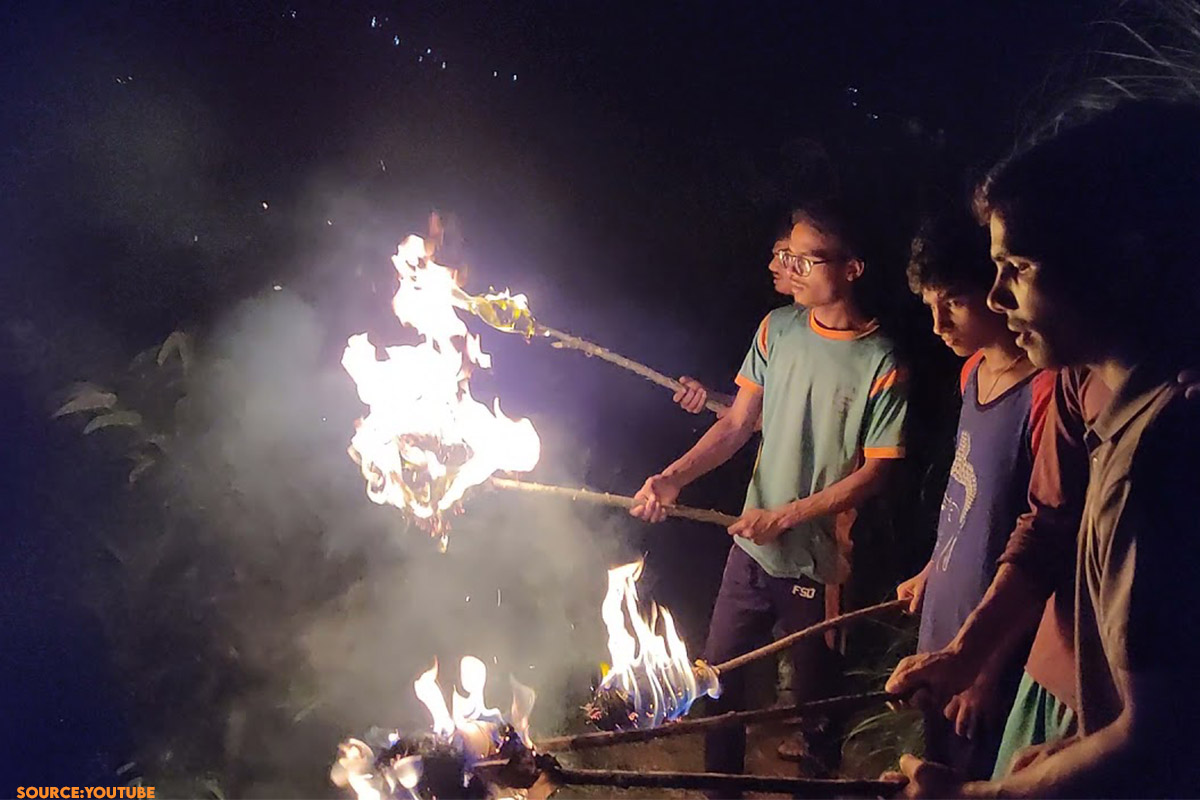
Celebrating Shrawan Sankranti Wherever You Are
The essence of Shrawan Sankranti transcends borders, offering a universal message of devotion, purity, and harmony with nature. Even if you're far from India or Nepal, you can embrace the spirit of the festival by preparing a simple vegetarian meal, offering prayers at a local Shiva temple, or simply reflecting on the importance of these values in your own life.
So, join the millions of Hindus around the world in celebrating Shrawan Sankranti! Immerse yourself in the vibrant traditions, savor the delectable food, and embrace the spirit of spiritual renewal.
FAQs
What is Shrawan Sankranti?
Shrawan Sankranti marks the beginning of the holy month of Shrawan in the Hindu lunar calendar. It's a time for devotion, purity, and celebrating the monsoon season. Observed by Hindus worldwide, it's a vibrant festival with traditions that vary by region.
When is Shrawan Sankranti celebrated?
The date of Shrawan Sankranti changes every year based on the lunisolar calendar, typically falling in July or August. For 2025, it is on July 16th.
How is Shrawan Sankranti celebrated?
Celebrations involve offering prayers at Shiva temples, observing fasts on Mondays (Shravan Somvar Vrat), and enjoying special vegetarian meals with family. Homes are decorated, and some regions have specific rituals like "Luto Falne Din" in Nepal.
What food is eaten during Shrawan Sankranti?
Vegetarian meals are a highlight, featuring seasonal ingredients believed to be beneficial during the monsoon. Popular dishes include kheer (sweet rice pudding), sabudana khichdi (tapioca pearl dish), and falahari chivda (trail mix). Regional specialties like Kwati (bean soup) in Nepal add variety.
Is Shrawan Sankranti vegetarian?
Yes, Shrawan Sankranti meals are traditionally vegetarian. Many Hindus abstain from meat, eggs, and certain vegetables during this holy month.
How can I celebrate Shrawan Sankranti if I'm not Hindu?
Anyone can appreciate the spirit of Shrawan Sankranti! Prepare a simple vegetarian meal, learn about Lord Shiva's significance in Hinduism, or donate to charity to embody the festival's themes of compassion and connection with nature.
What is the significance of Lord Shiva in Shrawan Sankranti?
Lord Shiva, the embodiment of purity and destroyer of evil, is worshipped during Shrawan Sankranti. Offering prayers and observing rituals are believed to appease him and seek blessings for a bountiful harvest and overall well-being.
What are some easy Shrawan Sankranti recipes?
Many Shrawan Sankranti dishes are simple to prepare. Kheer requires rice, milk, sugar, and cardamom. Sabudana khichdi uses tapioca pearls, peanuts, and basic spices. Online resources offer easy recipes for these and other vegetarian options.
How is Shrawan Sankranti celebrated in Nepal?
In Nepal, Shrawan Sankranti holds immense cultural significance. People observe fasting, offer prayers at temples like Pashupatinath, and wear the sacred Janai thread. "Luto Falne Din", a ritual to get rid of scabies.
What are the benefits of observing a vegetarian diet during Shrawan?
A vegetarian diet during Shrawan can be a way to detoxify and promote gut health. Seasonal vegetables and lentils provide essential nutrients while avoiding meat aligns with the emphasis on purity and self-control during this holy month. It's a personal choice, but many find it a beneficial practice.
